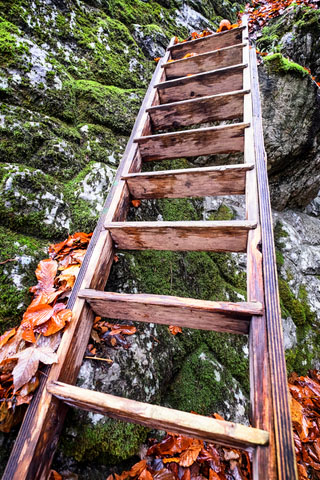
I once met a very elegant and charming American speaker, in Australia for a series of PD seminars. At the lunch break I took her to the cafeteria for a sandwich and an Australian-style café latte. Then we sat chatting over lunch.
Now there is something I have noticed about people who spend most of their working lives flying about the world on speaking tours. A day here, two days there, sleeping in large anonymous hotels – they have nary a moment’s blink at local people or the scenery.
I’ve observed, too, that they have an almost script-like set of answers to the usual ‘getting to know you’ type of conversation.
It goes something like this: ‘I live in this town, in that state. My home town is mainly into computers, cars, tribal artefacts. Home is my penthouse/log cabin with my Mom/Grandad/child/cat/dog. (Interestingly, spouses are not often mentioned.) Tomorrow I will leave for Johannesburg. Then Edinburgh next week. I will get home to the States in 10 days. This place is sooo beautiful/fantastic/fabulous. I love/adore it. Must bring my family to visit some day – they would love it. Thank you sooo much for all your help. Bye.’
And off they go, probably never to see you again.
No doubt, there’s only one way to cope with such a lifestyle: do the job; avoid any attachment, however trivial, to people and places in far-off lands; maintain a kind of friendly aloofness, detached and cool, with safely exchanged pleasantries that are little more than passing time.
Well, I am a bit nosey, but I like to short circuit all that stuff, to get behind the façade of professional friendliness, find out who is beneath all that. Sometimes it gets me into trouble, but only rarely.
Lisa and I sat with our lunch trays and talked of many things – real things such as families, schools and career paths, people’s expectations. We agreed on the need to value more the positive aspects of the difference between women and men in the corporate world. We affirmed the need to view a personal life in the context of the whole of life, stepping back from time to time to check on the perspective, as an artist steps back from the canvas.
Before becoming a professional speaker, Lisa had spent 15 or more years in merchant banking. Her clients were many and wealthy; high achievers and corporate risk takers. Life was lived on the edge – glamorous, exciting. And exhausting. She graduated, aimed for the stars and moved upwards. Sights were set firmly on the ladder to success. Years were spent focussed on a steady career climb. She was successful and well respected.
Then, when she had reached the top, she stopped to look around and realised that she didn’t much like the kind of life she had. She disliked the dehumanised balance-sheet mentality; the preoccupation with results, shares, money. She still knows the corporate lingo – investment potential, dividend, net gain, asset management.
Then I was momentarily stunned when she said, ‘I climbed to the top of that ladder. But my ladder was against the wrong wall.’
What?
It wasn’t just that she had not looked to see what was beyond the wall and whether or not she desired whatever that was. She had not looked at the wall itself, the support for her ladder, at all. It made me wonder what kind of wall it was. What story could it tell?
Maybe it was a wall of people, like moulded clay bricks. Bonded by the cracking mortar of broken relationships. Small tendrils of new life struggled for nurture in hard baked crevices. Birds pecked at the cement and brickwork, fragmenting further the crumbling structure. At the top of the wall, broken glass, guarding treasures and possessions, or an empty expanse of loneliness and wasted time – who knows?
Or maybe it was a stone wall. Hand chosen individual rocks, well rounded, strong, obdurate. No mortar here, just a bond created by the skill of the dry-stone waller, each member locked beside, beneath and above another. No space here for plants, or birds’ nests. A stern, hard wall, but worthy and dependable. From the top of such a wall one may see a garden, riches, importance. Or an empty, unpeopled house.
Ladders are useful.
They need only two points of support, top and bottom, as they lean against the wall. The wall can become invisible, seemingly unimportant. But to climb the wall itself – that would be different. Then the journey becomes the main thing.
The climber must get to know the wall. Crevices and gaps offer holds for searching hands and feet. Struggling plants are admired, their tenacity is wondered at. The climber must rely on the integrity of this wall. The view from the top will be satisfying whatever it is, simply because the climb itself was fulfilling.
Ladders certainly make wall climbing easier – especially for knees and fingertips. The thing is, select the right wall. Appreciate it. Don’t just concentrate on the ladder.
Having ‘changed walls’ Lisa now loves her life. Her talent for communicating is blossoming. She may or may not be a Christian, but what she said made me wonder: where should we Christians lean our ‘life ladders’.
What kind of wall should we choose?
.jpg) Sheelagh Wegman is a freelance writer and editor. She enjoys reading, music, sings in the choir of St David’s Cathedral in Hobart and lives in the foothills of kunanyi/Mt Wellington.
Sheelagh Wegman is a freelance writer and editor. She enjoys reading, music, sings in the choir of St David’s Cathedral in Hobart and lives in the foothills of kunanyi/Mt Wellington.
Sheelagh Wegman’s previous articles may be viewed at http://www.pressserviceinternational.org/sheelagh-wegman.html

Sheelagh Wegman is a freelance writer and editor. She is in the community of St David’s Cathedral in Hobart and lives in the foothills of kunanyi/Mt Wellington.
Sheelagh Wegman’s previous articles may be viewed at http://www.pressserviceinternational.org/sheelagh-wegman.html
